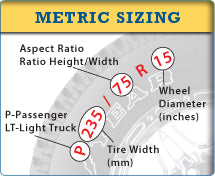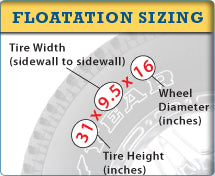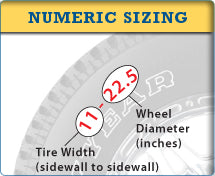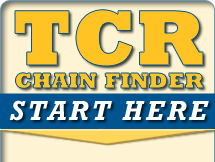Let’s face it, one of the most confusion things about buying tire chains is figuring out your tire size so you know what size chain to buy.
Metric Sizing
Most tires sold today are sized by the “metric” system. This sizing can be represented with no letter before the size, P-metric, LT-metric and ST-metric. Common examples of this are as follows: 235/75R15, P235/75R15, and LT235/75R15.
In these examples the first set of 3 digits is the width of the tire, measured from sidewall to sidewall, in millimeters, NOT the tread width.
The second group of digits is the “aspect ratio”. The Aspect Ratio is the height of sidewall from the wheel to the top of the tread. The height of the sidewall is a percent of the tire width ...the aspect ratio. In our example, 265/75, the sidewall height is 75% of the 265mm width, or 198mm.
The third set of digits is the rim diameter in inches.
Flotation Sizing
Flotation sizing is used for some cars and truck, and used for small tires such as the ones used on trailers, tractors, and ATVs ie... 22x10x10, 18x9.5x8. All of the measurements are in inches. The first number is for the height. The second number is the sidewall width. The last digits are the rim diameter.
Numeric Sizing
Numeric sizing is used light truck, 205-16, commercial truck, 11-22.5, and agricultural, 9.5-24, applications. The first digits are the width, sidewall to sidewall. The second digits represent the rim size. If your tire size happens to have three sets of numbers, 31x15.50-15, the first number is the height, the second number is the width, and the third number is the rim diameter.







